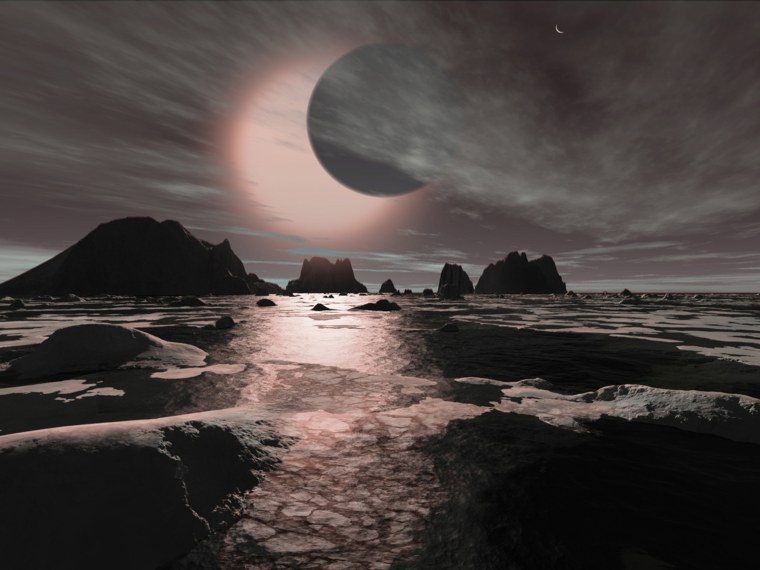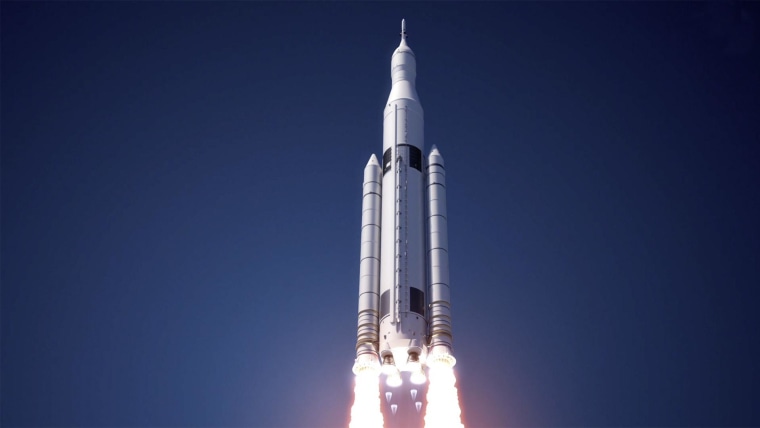how long will the earth last
How humans might outlast World, the sunday...and even the universe
It all starts with a picayune planet-hopping!

Nuclear war. Runaway climatic change. A global pandemic. Today our world faces all manner of existential threats. But scary possibilities similar these are nil compared to what astronomers say lies in shop for Earth. Our planet's ultimate destiny is to be baked, blasted, and eventually disintegrated.
At that place's nothing we can do to foreclose this cataclysm. Even so according to scientists who written report the far future, including Yale Academy astronomer Gregory Laughlin, the prospect for life is, oddly, rather brilliant. Given technological advances and the continuing evolution of our species, humans should be able to survive — in some form — long after World has ceased to exist.
Merely our afar descendants are going to take to do some planet-hopping.
The multiplanet era
The kickoff major catholic crisis will strike in near one.5 billion years. At that point, co-ordinate to projections past ecology scientist Andrew J. Rushby at the University of East Anglia in England, the brightening sunday will set off what might be termed "super-global" warming. Earth will be heated until the oceans boil.
Past and so, though, will we care? Nosotros already have the technology to constitute bases on the moon and Mars. So a billion and a one-half years from now, we'll probable have colonized the whole solar system — and perhaps other star systems in our Milky Way milky way.
Equally the sun grows hotter, other planets will become more appealing. Just as Globe becomes also toasty to sustain life, Mars will reach a temperature that makes it habitable. Cornell University astronomer Lisa Kaltenegger has run models showing that the Red Planet could so stay pleasant for some other v billion years.
Almost seven.v billion years from now, the sun volition exhaust its hydrogen fuel and switch to helium. That will cause it to balloon into an enormous cherry-red giant. Mars as well every bit World will be fried. On the other hand, the one time icy moons of Jupiter and Saturn will have get tropical water worlds — prime real estate for man colonies. We could live there for a few hundred million years.
Near 8 billion years from now, the flaring sun will brand atmospheric condition intolerably hot all the way out by Pluto. "The exact dates depend on how much mass you approximate the sun volition lose and how much planets will motion," Kaltenegger says. But the message is clear: Life will be impossible in our solar system.
The star-hopping era
Fortunately, Laughlin points out, at that place are 200 billion other stars in the Milky Way, nearly with planets of their own. Perhaps our descendants volition have mastered well-nigh-lite-speed travel. Fifty-fifty with current engineering science, all the same, interstellar travel is believable on the kind of timescales we're talking well-nigh.
The fastest spacecraft congenital to date, Voyager 1, is racing away from the sunday at 38,027 miles per hr. At that speed, information technology would have lxx,000 years to achieve the nearest star. But future humans might build interstellar arks, giant ships on which generations of travelers would live and dice before delivering colonists to a new destination. Such star-hopping colonists could spread across our entire galaxy before Earth overheats, even assuming no advances in rocketry.
At first, those voyagers might choose to set canvas for planets around midsize, yellow stars similar to our own. That will take care of us for quite a while, since sunlike stars last 12 billion years before they fizzle. As ane star ages and dies, we can motility on to the side by side. We've got fourth dimension.
L billion to 100 billion years from now, though, all of the raw textile for new stars will be used up. The last generation of sunlike stars volition burn out, and humans will need a new kind of place to live.
It turns out that we take better options than yellow stars like our sun. The Milky way is dotted with cherry-red dwarfs, libation and dimmer than our sunday only congenital to terminal. "For the next 10 trillion years, the red dwarfs are just coming into their ain," Laughlin says.
And so planets around ruddy dwarf stars may be our homes until well-nigh fifteen trillion years from now, when they too will expire.
The gravitational era
Red dwarfs will be the last generation of stars. Once they die, the universe volition go dark — literally. Fifty-fifty and then, Laughlin doesn't meet this as the end of the line for life. Instead, we will enter what he calls "the gravitational era."
In this dark future, we might build enormous infinite power plants around black holes, lowering masses toward them to harvest their gravitational pull "like the weights pulling downwardly in a grandfather's clock," says Princeton physicist J. Richard Gott. Or nosotros might tap the internal rut of planets to generate energy: The gravitational interaction between angelic bodies creates friction, which can keep planets hot within even without any starshine.
Don't picture cavern dwellers huddling effectually geothermal heaters. Trillions of years of development will have long since transformed us, Laughlin says. Perhaps nosotros will have merged with our computers. Perhaps nosotros won't even have a concrete form. The simply thing our descendants volition definitely take in mutual with united states of america is the essential spark of life: not flesh and blood necessarily but information.
"That'south the near important lesson from thinking most the far hereafter universe," Laughlin says. "We're being naïve when we think of life only in terms of Earthlike planets and carbon-based life."
Information-based life can keep going near forever. The gravitational era that begins around 15 trillion years from now could continue for quintillion years and beyond, Laughlin estimates. A quintillion is a 1 followed by 18 zeroes. Information technology is trillion times every bit long equally the entire history of our hominid line on Earth.
Will the universe die before nosotros do?
Notwithstanding, even this virtually-eternity is not the aforementioned every bit eternity. At some point, life runs into the concrete limits of matter itself.
Physics theories suggest that sometime betwixt ten^34 (1 decillion) and ten^64 (1 vigintillion) years from now, the protons establish in the nuclei of all atoms will disuse. That means black holes will be the only organized course of matter in the universe. Hereafter humanity can't take whatsoever concrete form at this point.
At 10^100 years — 10 duotrigintillion years A.D. — even blackness holes volition evaporate. In that location will exist no energy or structures of any kind — only a cold, eternal mist of farflung particles. This really is the end indicate for life.
Or maybe not. Paul Steinhardt of Princeton University, one of the founders of modern cosmological theory, is exploring a model in which the universe goes through countless cycles of creation. His latest version, developed with Anna Ijjas of Columbia Academy, suggests that the universe could experience a new Big Bang well before the last black hole apocalypse.
If it does come, a new Big Bang would wipe away all traces of this universe — unless nosotros can observe a mode to leapfrog into the adjacent catholic cycle. Current physics offers no guidance here.
Then once again, nosotros accept quite a while to ponder the problem.

FOLLOW NBC NEWS MACH ON TWITTER, FACEBOOK, AND INSTAGRAM.
Source: https://www.nbcnews.com/mach/science/how-humans-might-outlive-earth-sun-even-universe-ncna831291
Posted by: joneshishismand.blogspot.com


0 Response to "how long will the earth last"
Post a Comment